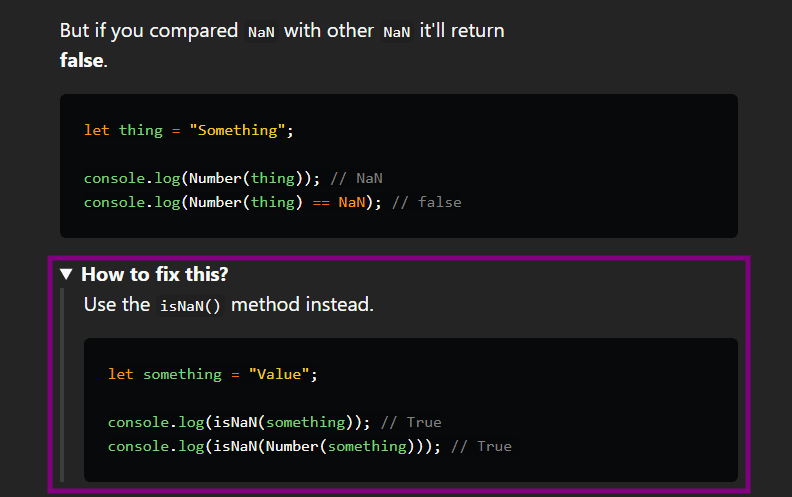I personally didn't understand how do JS act with number, but after I learnt about it.
We have to understand what's the data types of JavaScript, and how to use them. Let me help you with it. 😄

In JS we have three data types for numbers: Number, null, NaN.
I'll explain each of them and give an example for each of them.
-
Number: The main Number data type. -
null: intentional absence of any object value. -
NaN: Not a Number.
Number
whether it's integer like: 1
or float like: 1.3
It is number, if there was a decimal number it'll add it, if not it'll sow up as normal integer.
console.log(5/2); // Outputs: 2.5
console.log(4/2); /// Outputs: 2
We usually use
Number()to turn the variable to number.
NULL
Null basically is none. If you made undefended variable it'll equal null.
And it doesn't mean that it's an empty string or 0.
let nothing; // This variable is undefined.
console.log(null == nothing); // Outputs: true
console.log(null == 0); // Outputs: false
console.log(null == ""); // Outputs: false
That happens because null only equals the undefined variable. null and undefined are equal but not identical.
NaN
NaN stands for Not a Number, and it appears if you you have a filled string and converted it to number.
let thing = "Something";
console.log(Number(thing)); // Outputs: NaN
But if you compared NaN with other NaN it'll return
false.
let thing = "Something";
console.log(Number(thing)); // NaN
console.log(Number(thing) == NaN); // false
Use the How to fix this?
isNaN() method instead.let something = "Value";
console.log(isNaN(something)); // True
console.log(isNaN(Number(something))); // True



Top comments (2)
I didn't mean that null is number buddy. and I just added
nullnot because it's a number, it was because people think it's equal to0and then get confused when it doesn't equal.And thanks for clarifying those topics that I didn't cover.
I know all of those, but I wanted to explain them in simple way and examples.
So I meant to do the wrong way so I show that it's wrong and explain the right way and the reason for it as much as I could.
nullis not a number but when we set it as the value of the variable if we increased it, it'll be 1.The last one I already said in the article right here ↴

I hope you read the article carefully again. 😊